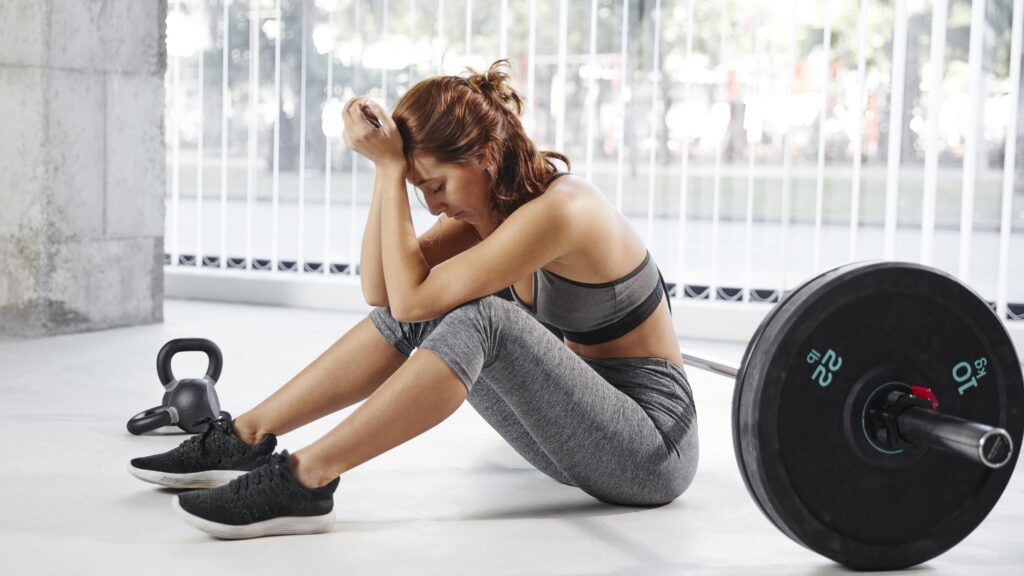Introduction
Let’s be real—fitness in your 30s and 40s hits differently. Gone are the days of bouncing back after two hours of sleep and a Red Bull-fueled workout. This is the era where your body starts whispering, “Hey, maybe we should warm up first,” and your metabolism starts behaving like it’s on vacation. If you keep training like you’re still in your 20s, you’re setting yourself up for burnout, injury, or just plain frustration.
So, what should you stop doing to stay fit, functional, and fired up? Let’s dive in.
Mistake #1 – Ignoring Recovery Time
You might feel like skipping rest days is a power move, but here’s the truth—your muscles don’t grow while you’re working out, they grow while you’re recovering. And once you hit your 30s, your recovery slows down whether you like it or not.
Tips to Optimize Recovery
- Use foam rollers, massage guns, or even a hot bath.
- Prioritize sleep like it’s your side hustle.
- Take at least one full rest day per week—no guilt allowed.
Mistake #2 – Overtraining Without Listening to Your Body
“No pain, no gain”? More like “no brain, all strain.” Pain is your body screaming, “Hey, maybe don’t do that again!”
Spotting Overtraining
- Constant fatigue
- Irritability or mood swings
- Declining performance
- Weird cravings or appetite loss
Mistake #3 – Skipping Strength Training
Strength training isn’t just for bodybuilders. Once you hit your 30s, you start losing muscle every decade if you don’t do something about it.
How to Start (Even if You’re New)
- Bodyweight exercises like push-ups and squats
- Resistance bands or dumbbells
- Two to three days a week is a great place to begin

Mistake #4 – Neglecting Flexibility and Mobility
Flexibility might not be sexy, but tight hips, sore backs, and stiff shoulders definitely aren’t either.
Mobility Made Easy
- 5–10 minutes of dynamic stretching before workouts
- Static stretching or yoga after
- Daily “movement snacks” like shoulder rolls or toe touches
Mistake #5 – Doing the Same Workout Routine Forever
Doing the same thing over and over is a great way to hit a plateau. Your body adapts quickly, so if it’s not challenging, it’s not changing you.
How to Mix It Up
- Add resistance, increase reps, or switch formats
- Try new classes or sports—kickboxing, dance, pilates?
- Track your progress and rotate your workouts every 4–6 weeks
Mistake #6 – Prioritizing Cardio Over Everything
Running on the treadmill for an hour a day and calling it a workout plan? That’s like only eating toast for every meal.
Balance is the Key
- 2–3 days of strength training
- 2 days of cardio (mix steady-state and HIIT)
- 1–2 days of flexibility work or active recovery
Mistake #7 – Ignoring Nutrition
You can’t outrun a bad diet. And after 30? Your metabolism is no longer your wingman.
Common Pitfalls
- Skipping meals
- Overdoing processed “health” foods
- Ignoring protein intake
Pro Tip
Aim for protein with every meal, hydrate like it’s your job, and eat whole, colorful foods.
Mistake #8 – Underestimating Sleep
Sleep is not optional—it’s essential. Muscle repair, fat burning, and even hormone regulation all happen when you’re snoozing.
Better Sleep Tips
- Keep your room cool and dark
- Avoid screens an hour before bed
- Create a wind-down ritual (think stretching or journaling)
Mistake #9 – Relying on Supplements Instead of Food
Supplements can help, but they’re not magic dust. Your diet is the main dish—supplements are just the garnish.
Whole Food > Powder
- Swap pre-workout for a banana and peanut butter
- Get protein from chicken, tofu, or eggs before shaking it
- Focus on nutrient-dense meals first
Mistake #10 – Skipping Warm-Ups and Cool-Downs
Yes, we know they’re boring. But skipping them is like driving without brakes.
Quick Warm-Up Routine (5–10 min)
- Arm circles, leg swings, jumping jacks, air squats
Cool Down Suggestions
- Child’s pose
- Pigeon stretch
- Deep breathing for 2 minutes

Mistake #11 – Not Getting Regular Check-Ups
Preventive health checks can catch small problems before they become big ones. Plus, some conditions like high cholesterol and blood pressure can sneak up silently.
Important Metrics to Watch
- Blood pressure
- Blood sugar
- Hormone levels
- Vitamin D and B12
Mistake #12 – Training Like You’re Still 20
Yes, you’re still strong. But now, you’re training for longevity, not just aesthetics.
Smart Training Strategies
- Focus on form over ego-lifting
- Use progressive overload, not maximum weights
- Include joint-friendly moves like rowing, swimming, or resistance bands
Mistake #13 – Not Setting Realistic Goals
Want abs in 3 weeks? Let’s be honest—you’re not in a transformation ad. Goals need to match your lifestyle.
How to Keep It Real
- Use SMART goals (Specific, Measurable, Achievable, Relevant, Time-bound)
- Track progress, not perfection
- Celebrate small wins often

Mistake #14 – Ignoring Mental Health in Your Fitness Routine
A stressed-out mind leads to a burned-out body. Fitness isn’t just physical—it’s psychological.
Mind-Body Practices
- Meditation
- Breathing exercises
- Journaling post-workout
Mistake #15 – Comparing Yourself to Others
Instagram isn’t real life. That 25-year-old fitness influencer? Different stage, different story.
Your Fitness Journey = Your Rules
- Focus on how you feel, not just how you look
- Avoid the comparison trap—it steals your joy
- Remember: progress is personal, not a popularity contest
Conclusion
Your 30s and 40s are not the end of your fitness journey—they’re the beginning of a smarter, stronger, and more sustainable one. Avoid these mistakes, and you’ll be amazed at what your body can still do. Embrace the change, respect your limits, and keep showing up. Because your best years? They’re not behind you—they’re right now.
FAQs
What’s the best workout split for people in their 30s and 40s?
A balanced weekly split includes 2–3 days of strength training, 1–2 days of cardio, and 1–2 days of flexibility/mobility work.
Is it too late to start working out in your 40s?
Absolutely not. Many people start in their 40s and achieve amazing results. Your body is more adaptable than you think.
How often should you work out in your 30s and 40s?
Aim for 4–5 days a week, mixing strength, cardio, and recovery.
Can you build muscle after 40?
Yes! With proper strength training, nutrition, and recovery, muscle gain is totally possible—even after 40.
What diet works best for staying fit after 30?
A whole-foods-based diet rich in lean proteins, healthy fats, complex carbs, and fiber. Hydration and portion control matter too.

